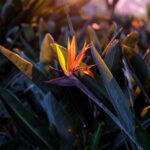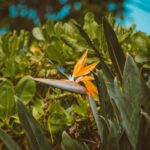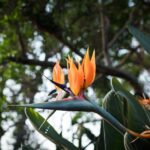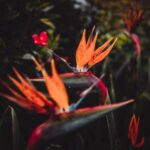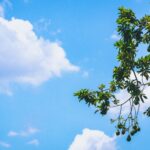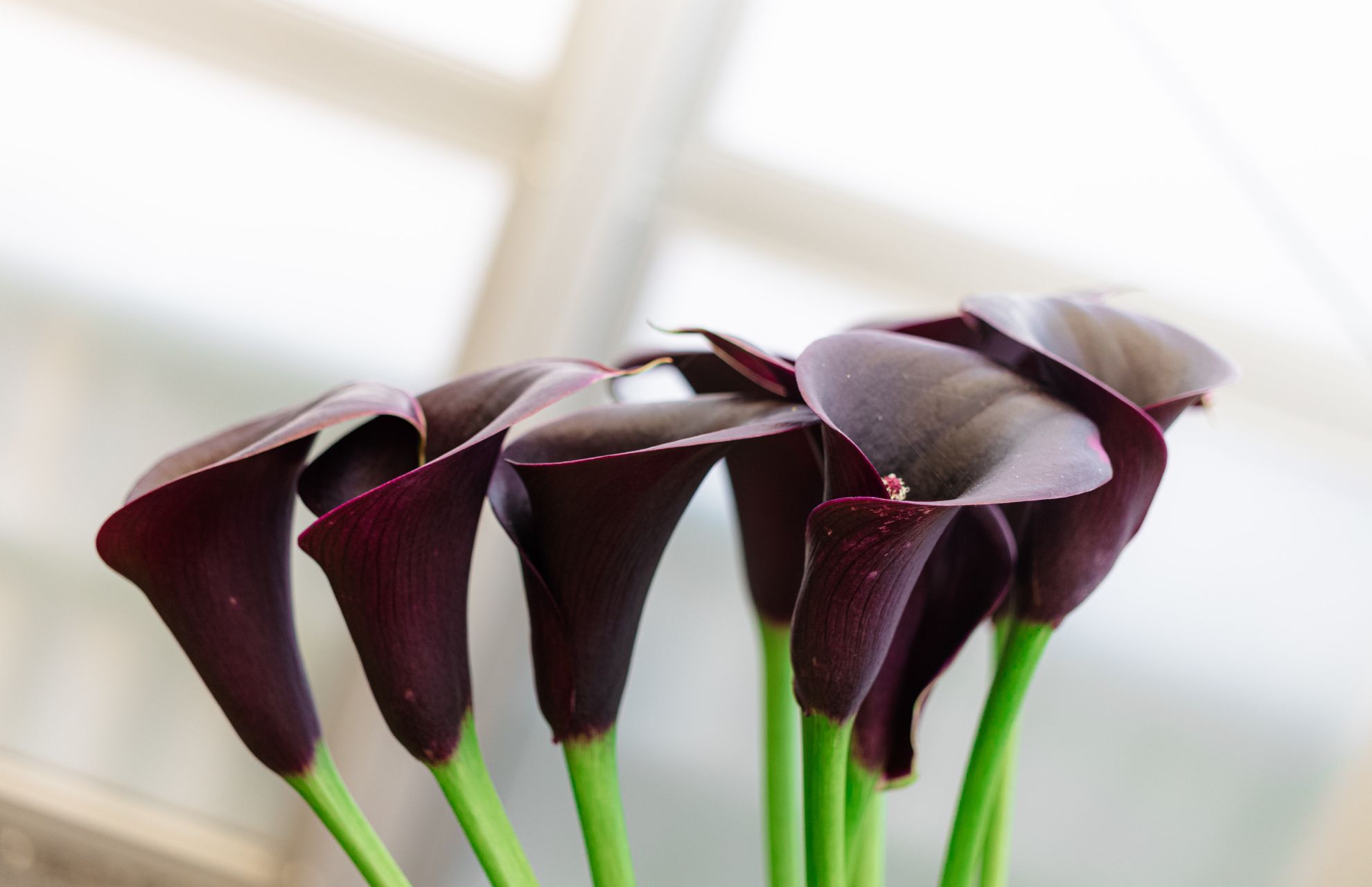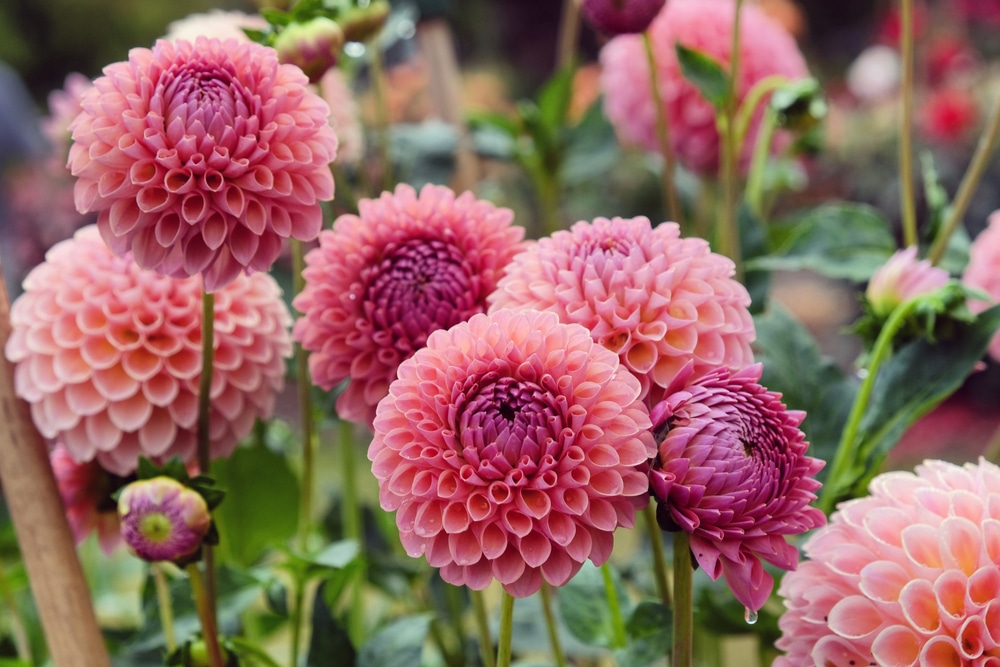The bird of paradise, a relative of the banana, has large, waxy leaves that are attractive even without the orange decorative flowers.t blooming.
What is causing my bird of paradise leaves to curl? Insufficient water and low humidity are the main causes of leaf curling on birds of paradise plants. The health and appearance of your bird of paradise leaves can be impacted by a wide range of factors.
Reasons For Bird Of Paradise Leaves Curling
The condition of the leaves reveals the health of the plant as a whole.
Maintaining the plant’s general health is the first step to producing the showy orange blooms, though not all birds of paradise plants will bloom indoors.
Watering/Humidity Issues
Most of the time, soil that is just a little damp is what the bird of paradise prefers. It won’t tolerate complete dehydration in between waterings very well.
The leaves may also lose moisture more readily due to their large surface area, but high humidity can halt this process.
- Solution
Keep your bird of paradise’s watering routine consistent.
When the top few inches of soil are dry, thoroughly water the area. Until you’ve established the ideal watering schedule for your plant and environment, check the plant frequently.
Keep the humidity high by running a humidifier, misting the leaves twice a week, or placing a pebble tray under the plant.
I recommend using this ultra-quiet humidifier with a rotating nozzle so that you can accurately direct the mist straight toward the plant.
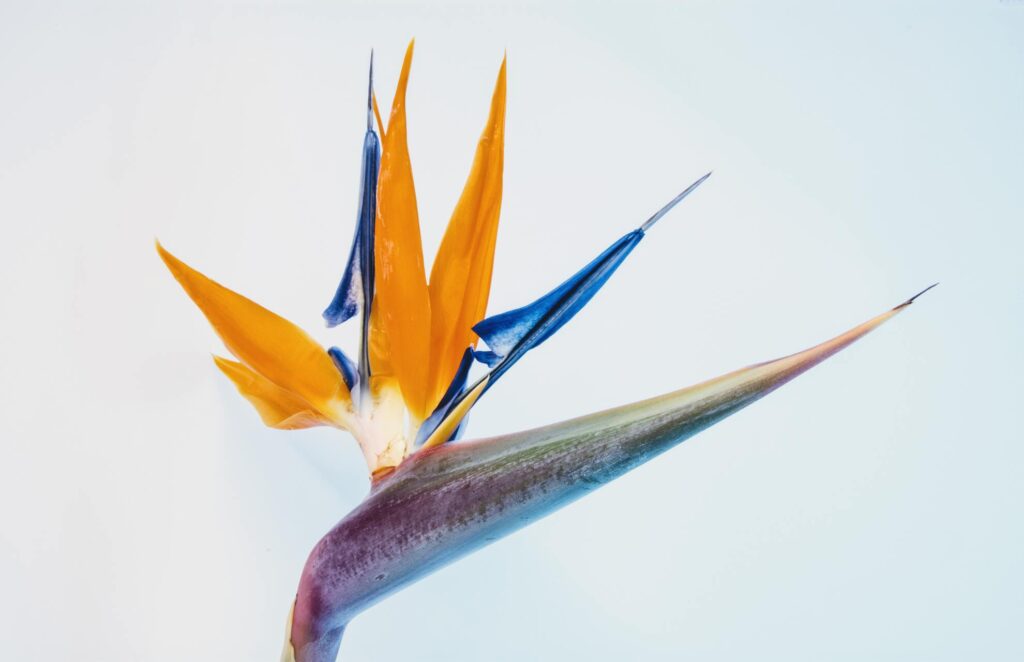
Water Quality Issues
Your local area may have different levels of chemicals and trace minerals in your tap water.
These substances may occasionally be present at levels that are harmful to your bird of paradise’s health.
- Solution
If you are aware of having particularly hard water or if just like to be proactive, only use filtered water for your bird of paradise.
If chlorine in particular worries you, you can leave your watering can of tap water outside overnight before watering. The chlorine is effectively removed in this way.
Temperature Issues
The tropical plant known as the bird of paradise prefers temperatures between 65 and 85 degrees F.
- Solution
keep the year-round temperature range between moderate and warm. Additionally, avoid placing the bird of paradise too close to a heat source or an air conditioning vent.
Lighting Issues
Very bright indirect light or moderate amounts of direct sunlight are both suitable for your bird of paradise. Not sure exactly what the distinction is? Here, we provide a comprehensive explanation.
It nonetheless has a “goldilocks” zone where too much direct sun can cause leaf burn and curling. The leaves will, however, wilt and curl if there is insufficient light.
- Solution
Choose a spot in your house that gets some direct light and bright, indirect light for your bird of paradise.
Although direct sunlight should be present, it shouldn’t be the glaring midday sun that many regions experience in the summer.
Soil Issues
It’s crucial to plant your bird of paradise in soil that has the right nutrients, pH, and structure to preserve its vibrant, healthy leaves.
Because it consumes a lot of food, the bird of paradise requires nutrient-rich, draining soil to thrive.
Overfertilizing, however, can contaminate the plant and poison its roots. The ideal soil should have a pH of 5, which is slight acidic.5-7.5.
- Solution
Add sulfur to your soil to lower the pH.or peat moss to your mix.
Remove the top few inches of soil and replace it if you think you overfertilized your bird of paradise plant.
Take your plant outside and thoroughly rinse the soil several times, letting the soil drain completely between rinses.
Consider repotting your bird of paradise in new, high-quality potting soil (such as this one) if the soil is of poor quality.
Pest Issues
Any of the typical pests that affect houseplants can infest birds of paradise.
However, sap-sucking pests like mealybugs, scales, mites, and thrips will harm the leaves’ aesthetics the most.
- Solution
Regularly check your plant for pest activity. Neem oil or insecticidal soap can be used to treat the plant. (like this organic neem) at the first sign of any pests.
Additionally, you can give the plant a preventative treatment once a month or every other month.
Disease Issues
There is always a chance that a fungal infection could spread because the bird of paradise likes moisture. Leaf spot or root rot are common names for this.
In contrast to root rot, which can frequently become too advanced for the plant to be saved, leaf spot is typically treatable and containable.
- Solution
After root rot is discovered, any parts of the plant that can still be used can be cleaned with dilute hydrogen peroxide and then replanted in fresh soil and a fresh container.
Use an antibiotic to treat the affected area of the leaf spot.
Repotting Issues
Every couple of years (at the very least) your bird of paradise will need to have its pot replaced.
When roots are confined to nutrient-poor soil, they are unable to transport and absorb the water and other resources the plant requires.
Your plant may experience transfer shock after repotting, which can also cause leaf curl.
- Solution
If your bird of paradise shows any signs of being rootbound, you should re-pot the plant. roots coming out of the drainage holes or growing out of the top of the soil.
Try to disturb the plant as little as possible to prevent transfer shock. Maintain the same watering and fertilizing routines while relocating it to the same spot.
After repotting, the plant should recover in a few weeks, even if the leaves curl.
Tips For Planting Bird Of Paradise
- The leaves may curl due to dehydration, overwatering, or low humidity. When the container is half-dry, water the Bird of Paradise.
- The leaves may curl due to excessive sun exposure and abrupt temperature changes. By trial and error, ascertain how many sun hours your plant requires, then relocate it to a warmer area.
- A second reason for Bird of Paradise leaf curling is inadequate soil and pot size. Every two years, repot the plant into a bigger container and use a loose, nourishing substrate.
- Leaves can curl as a result of some pests and diseases. Spray horticultural oil or a fungicide on the plant to address the issue.


